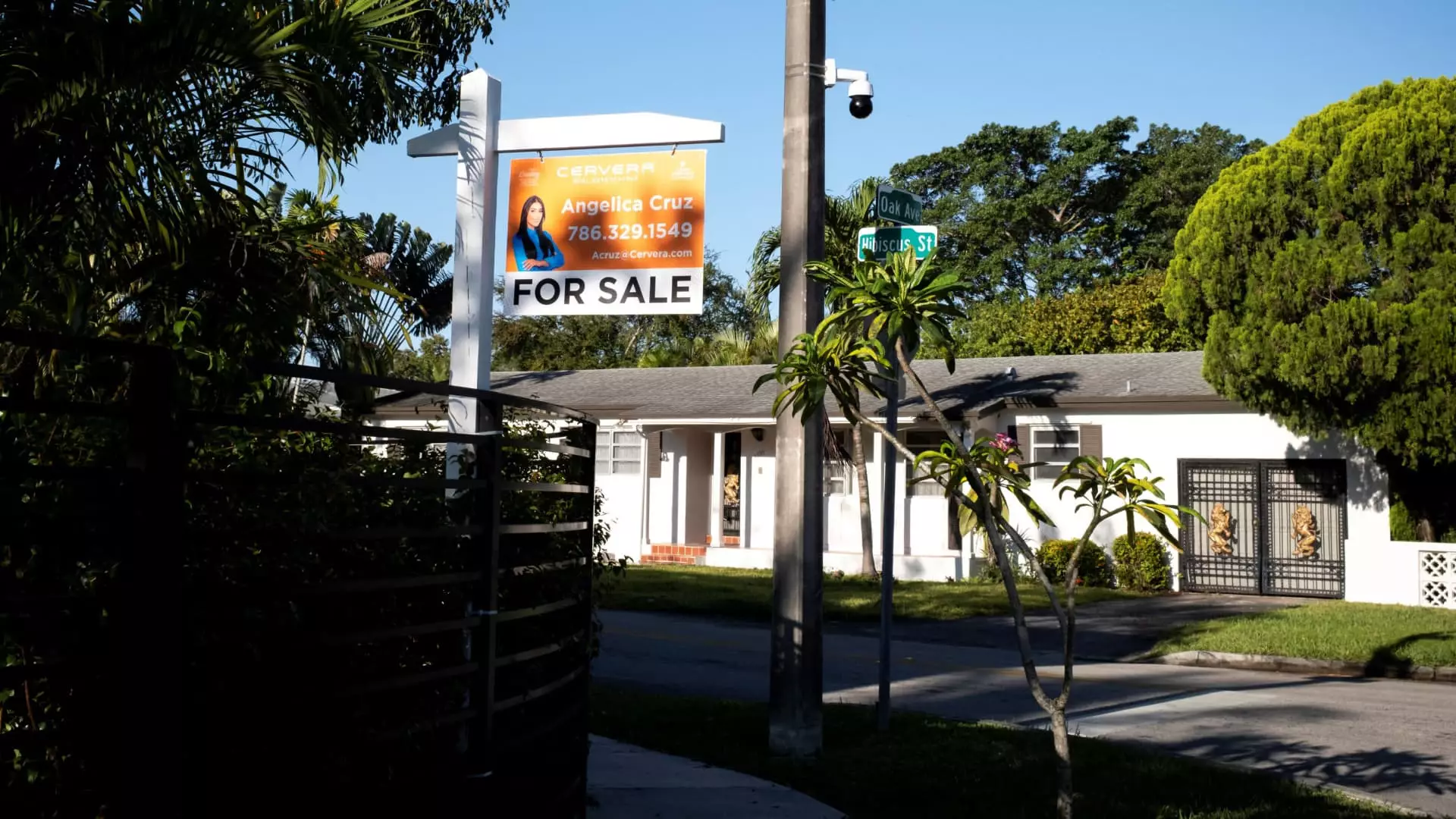As we step into what is typically heralded as the vibrant spring housing market, the reality we’re confronted with is downright grim. Recent reports indicate that sales of previously owned homes stumbled by 5.9% in March, landing at a mere 4.02 million units on an annualized basis, according to the National Association of Realtors (NAR). Remarkably, this represents the slowest March sales pace we’ve witnessed since 2009, a year that many would recall as marked by severe economic turbulence following the housing market crash. In reviewing these statistics, one can’t help but question the underlying health of our economy and the impact of rising mortgage rates that contribute to this worrying trend.
A Market in Decline Across the Board
Particularly alarming is the fact that sales plummeted across all regions, with the West taking the hardest hit. A staggering drop of over 9% in this area, characterized by exorbitant home prices, signals a canary in the coal mine for prospective homebuyers. While it’s worth noting that the West experienced a year-over-year increase, the driving forces behind this growth, particularly in the Rocky Mountain states, raise further questions. These regions thrive primarily due to robust job growth; however, is this stability sustainable or just a temporary respite in an otherwise fragile economy?
The sluggishness in home buying can be largely attributed to the persistent affordability crisis stemming from sky-high mortgage rates, which have hovered over 7%. Lawrence Yun, NAR’s chief economist, elucidates this correlation succinctly by highlighting that residential mobility is at historical lows. This stagnation intuitively points to reduced economic mobility, a situation that should alarm policymakers and everyday citizens alike.
More Listings Yet Fewer Buyers?
In a bizarre twist, one would expect that with an increase in available listings—1.33 million units as of the end of March, constituting almost a 20% uptick from the previous year—a corresponding rise in sales would follow. Yet, this increase in inventory has coincided with a chill on prices. The real estate market is currently characterized not by its traditional balance, but by unease — as evidenced by a median home price of $403,700, which, despite being an all-time high for March, is witnessing a troubling shrinkage in annual growth.
The calculations made by economic experts such as Yun reflect a broader picture where household wealth is allegedly burgeoning. However, as this wealth is increasingly concentrated in real estate valued at an astonishing $52 trillion, the implications are disconcerting. Each incremental gain in home prices enriches only a select few while further alienating prospective buyers, particularly first-time buyers who have declined to constitute 32% of the market, well below the historical average of 40%.
The Impending Threat of Canceled Contracts
Looking ahead, a notable indicator of distress in the market lies in the rise of canceled contracts, which continues to add layers of uncertainty. The situation is compounded by the volatility in the stock market, which could further deter buyers. As Robert Frick, an economist with Navy Federal Credit Union, posits, the March figures may merely underscore the onset of worse days to come.
In a climate where cash sales are dwindling—falling from 28% to 26%—and investor participation is stable at 15%, it raises fundamental questions about the long-term implications of these economic shifts. The current landscape could very well establish a dichotomy where only the financially elite can seize opportunities while the average American is left grappling with home affordability issues.
While the housing market may appear buoyed by lofty real estate valuations amidst broader economic turbulence, a closer inspection reveals underlying vulnerabilities that suggest we are not as stable as we might like to believe. In a time when housing should be a cornerstone of wealth for many, it risks becoming an insurmountable barrier. As homeownership becomes a distant dream for the middle and lower classes, we must ask ourselves: what measures are being taken to ensure that this essential aspect of American life remains accessible to all?

